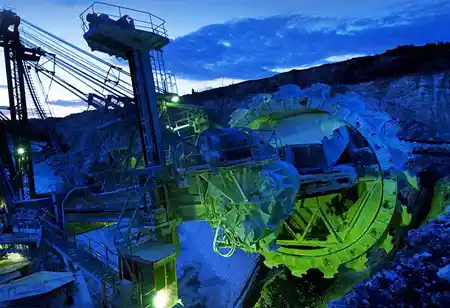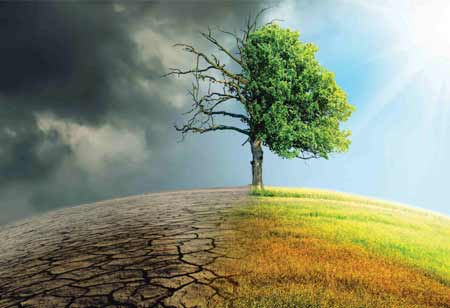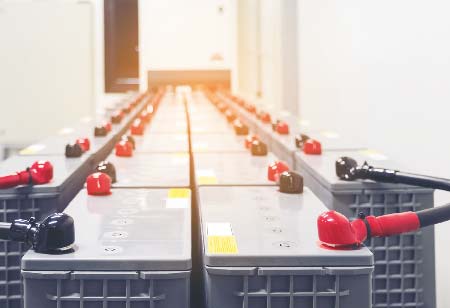THANK YOU FOR SUBSCRIBING

Leveraging Technologies for Climate Risk Intelligence and Resilience
Daniel Martens, Climate Risk Intelligence Lead at Royal HaskoningDHV

 Daniel Martens, Climate Risk Intelligence Lead at Royal HaskoningDHV
Daniel Martens, Climate Risk Intelligence Lead at Royal HaskoningDHV The conversation around climate change today emphasises on mitigating our contributions to the global carbon imbalance by adopting effective sustainability strategies, decarbonisation solutions and mandatory environmental disclosures, and rightfully so.
The other side of climate change, where extreme weather events and natural hazards pose an increasing threat to businesses and societies, is however often overlooked or only addressed after a disaster has damaged assets or disrupted operations and livelihoods. Science and experience tell us that climate risks will only become more prevalent and more destructive.
Therefore, regulators and shareholders increasingly request business owners to focus on adaptation and disclose the risks climate-related hazards have on their business continuity through guidelines by amongst others the Taskforce on Climate-related Financial Disclosures (TCFD). But business owners are often left in the dark on how to get actionable insights into these risks.
Need for Holistic Climate Resilience Strategies
So, what has kept businesses from doing climate and natural hazard risk assessments at scale?
The lack of scalable and affordable technology, the lack of enough accurate data within reach, as well as a focus on traditional disaster risk management rather than strategic resilience, as addressed by Djeevan Schiferli in the article Climate Change Risk & Resilience. The latter aside, most of the arguments no longer hold up in today’s world, given the abundance of available data and technologies.
“Leveraging advanced technologies like data analytics, computing power, and satellite imagery can help businesses stay ahead of potential impacts of climate-related disasters and ensure business continuity”
So, the real reason is the deprioritisation of strategic climate resilience. Business owners have a growing list of urgent and ad-hoc needs to consider to maintain business continuity, and the often-considered intangible climate risks get pushed to the bottom of the priority list. That is, until disaster strikes, asset insurance premiums need reviewing or risk disclosure reports are due.
But disruptions rather than disasters alone are a major growing concern for decision-makers, as interdependencies of processes and systems are becoming more apparent and cascading effects ever more evident. For example, heatwaves across Europe and China in 2022 resulted in drought and low water levels, wreaking havoc on crops and disrupting supply chains due to unnavigable waterways and food shortages. Economic losses were estimated to be USD 22 bn in Europe and USD 7.6 bn in China.
Technologies to Understand, Prevent, Predict, and Optimise
So how can we leverage data and technology today to stay ahead of the potential impacts climate change may have on business continuity, both directly and through cascading effects?
Before we can accurately predict all the complex processes affecting businesses today and in the future, we need to take a step back and take stock of all the advanced technologies we can start leveraging right now.
Data
Since the onset of the digital age, we have generated an enormous amount of data – it is estimated that by 2025 there will be 175 billion terabytes of data in the global data sphere. This is a staggering figure, though it can seem rather meaningless if all that data is not put to good use.
The European Space Agency’s Sentinel satellites and Intermap’s multi-sensor technologies are examples of systems collecting global data at ever higher resolutions and frequencies, allowing near real-time imagery at below 1-metre resolution. These datasets are used to better understand weather patterns and land use changes or to assess the onset and extent of flood events.
Closer to Earth’s surface, however, is where most of the data is generated. From smartwatches to smartphones and CCTV cameras to more sophisticated IoT devices, more than 43 billion devices are expected to be connected to the internet in 2023, so we can leverage nearly every source to track weather and natural disasters, monitor environmental parameters and make much better risk assessments, more frequently, more proactively.
Computing Power
To efficiently process and analyse all that data we need more computing power, and ease of access to it. I recall only a decade ago using Linux commands to place a booking in a virtual queue to access a limited number of cores in a server room, only to await my turn so I could run a numerical simulation – and if you were smart you set them up in batch to run numerous scenarios at once.
Today we have near-instant access to cloud and edge technologies and can even turn our personal desktops into high-end data-crunching machines that simultaneously render graphics in an instant. Affordability is less of a concern now, though availability is due to affected supply chains globally. But a single GPU already enables us to run flood simulations on a 50x50cm numerical grid on a small city scale. Massive parallel computing with GPUs allows for an increase in resolution and extension of boundaries to country-scale or even broader. Cloud computing lets you do this using virtual servers, saving you the hassle of investing in equipment and letting you run complex calculations from anywhere in the world.
Advanced Analytics
We added some data and some computing power. The last ingredient we really need is the tools to carry out data analytics. Machine and deep learning have truly changed the way domain experts are able to tackle complex problems, utilising nearly every data source to extrapolate our natural hazard insights to areas where data is scarce.
An example is FloodTags, who delivers sophisticated services using artificial intelligence and natural language processing to monitor floods and wildfires by analysing public media data. Or Hydroinformatics Institute (H2i), who helps the Singapore government utilise CCTV cameras to detect and predict rainfall intensity as well as surface-level flooding by combining computer vision technology and enhanced machine learning algorithms.
Technology Integration to enable strategic climate resilience
By now we should be well on our way to integrating these technologies and helping businesses get actionable insights into climate risks at scale, perform risk assessments with ease, and quantify their exposure and vulnerability to climate hazards. This removes the burden of post-disaster recovery or regulatory pressures, saving money and lives. Doing so will inevitably make it easier for businesses to assimilate climate risk and resilience into their strategic resilience agenda and allows decision-makers to focus on maintaining business continuity.
Read Also






















ON THE DECK